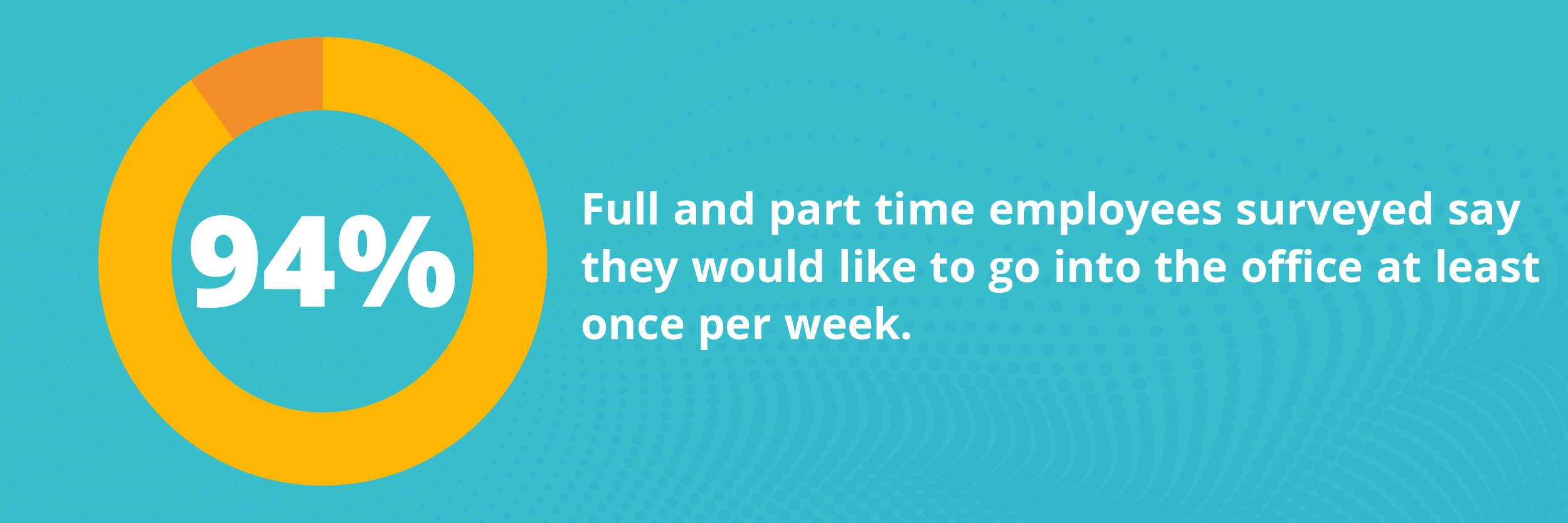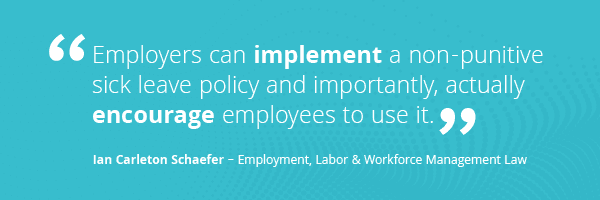As April begins, we recognize the amount of change that has taken place in the past year, all to learn to work from home. But now, some companies are bringing their employees back to the office.
Many are celebrating the return to the status quo, believing it will increase productivity and efficiency. But what can we learn from the time we had away? What do leaders believe will be most effective for returning? And how can employees feel safe collaborating in person once more?
The benefits of office life
Office life has been missed (to varying degrees!). While no one seems to miss the commute, it was nice to see your friends, pop into meetings, and accomplish things together.
This is why 68% of executives believe at least three days in-office would help maintain company culture, and a striking 94% of full- and part-time employees in one survey say they would like to go into the office at least once per week. That’s promising! Interpersonal interaction and collaboration create the foundation for culture, happy employees, and success. But COVID has changed the context.

It’s going to take time before everyone is absolutely comfortable collaborating in close quarters, so it’s time to put your newfound remote skills to work easing your transition!
Distance collaboration
If you found chat, text, and video calls helpful during the pandemic, think about keeping them as part of your culture. Some meetings can be emails, some emails can be phone calls, and some phone calls could be chats! Check with your team to see what they like and what makes them feel most comfortable and then put clear guidance in place.

Employees can also stay at their desks and use collaboration tools like b-hive Communicator or its integration with Microsoft Teams to hold socially distant meetings. Communicator ensures that everyone in the company is present—even if they aren’t in the same space—through chats, calls, and video. With these collaboration tools, in-person employees can stay at their desks and hold meetings with all employees, whether in-office or remote. This helps to build camaraderie and increase productivity, even if the team is split between locations.
Solutions to other risks
For the time being, there are going to be risks and challenges associated with coming back. If not everyone is vaccinated, for example, it may create tension and make some employees feel unsafe. But as a leader, there are steps you can take to get ahead of these hurdles.
If possible, provide employees with the ability to express their preferences related in-office safety. Take the time to understand their fears and/or excitement on a human level to build a meaningful sense of safety. Start with their preferences, and see if any of the suggested solutions below might be a fit for your team.
Certain companies have begun limiting how many employees can be in-office on a given day; employees switch with one another so everybody has time in the office, without worrying about cross-infection. Consider creating a rota system by determining the percentage of employees that can be in office based on office space.
Then, to keep everyone on fair footing, hold meetings with all necessary employees at once—even if this means using collaboration tools from inside the office. A group setting fosters open communication, so including remote employees in team meetings through video chat should fight any feelings of exclusion.
There are other options for keeping everyone on the same page too. With a unified cloud communications system, you have the option to use one number for all of your devices, so work isn’t tied down to a desk phone. When employees are free to use their own devices, it encourages productivity, saves costs for companies, and increases convenience for employees. Cloud platforms also offer messaging and softphone abilities, allowing all employees to communicate no matter where they are. Connection between in-office and remote workers will flourish with these options.
Another proactive step employers can take to promote safety is to put in place specific protocols for use of sick leave hours. Employers should consider implementing a non-punitive sick leave policy and clearly convey that employees are encouraged or required to utilize it. If someone is feeling symptomatic, send them home immediately. Once they are ready to work, have them work remotely for the recommended number of days and use collaboration tools to keep them in the loop as a contributing member of the team.

If your company is not mandating that employees be vaccinated, consider providing incentives that encourage team members to do so.
Setting up for success
In the confined spaces of a small office, it’s important to strictly adhere to other CDC-recommended protocols while they’re in place.
Where there’s enough space, you can create a one-way-street system for employees to follow, so as to keep paths clear and avoid close contact with others. This might require reconfiguration of desks or the installation of plexiglass in between walking areas and desks. Portable walls are another option. You can also hot-desk, so employees can take whatever seat they’re comfortable with rather than sitting in one assigned place.
Place capacity limits on common areas—the kitchen or elevators, for example—and ensure adequate airflow. Keep windows and doors open, and make sure your HVAC system is functioning properly.
And if your employees really want to be clear in expressing their preferences, there are some creative ways for them to do so. Social Bands are a way to communicate your preferences on social distancing at a glance. There are three different color bands a person can wear to indicate what level of contact they’re comfortable with: social distancing, elbows only, or high fives and handshakes. Proxxi Contact is another example of wristband that can be worn. It signals when another band is within six feet, making it perfect for offices with blind spots. It also works for contact tracing, so you know if you’ve been in close contact with a COVID-19 case and should be tested.
At the end of the day
While some companies may not return to 100% in-person work, plenty of businesses—and employees—are looking forward to walking into the office again. Following the CDC’s work guidelines can help to soothe nervous employees who are wary and encourage employees who are raring to go. And incorporating the digital communication tools you learned during your time working from home can continue to build collaboration in your business while also serving as a fallback option for communicating under new health and safety procedures.
Every challenge is just an opportunity in disguise! If you’re deliberate and thoughtful about returning to the office, it just might change your business for the better.










